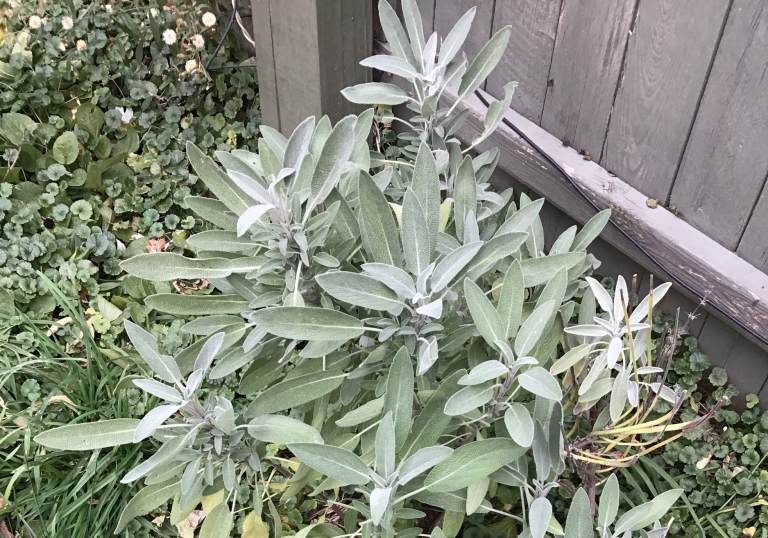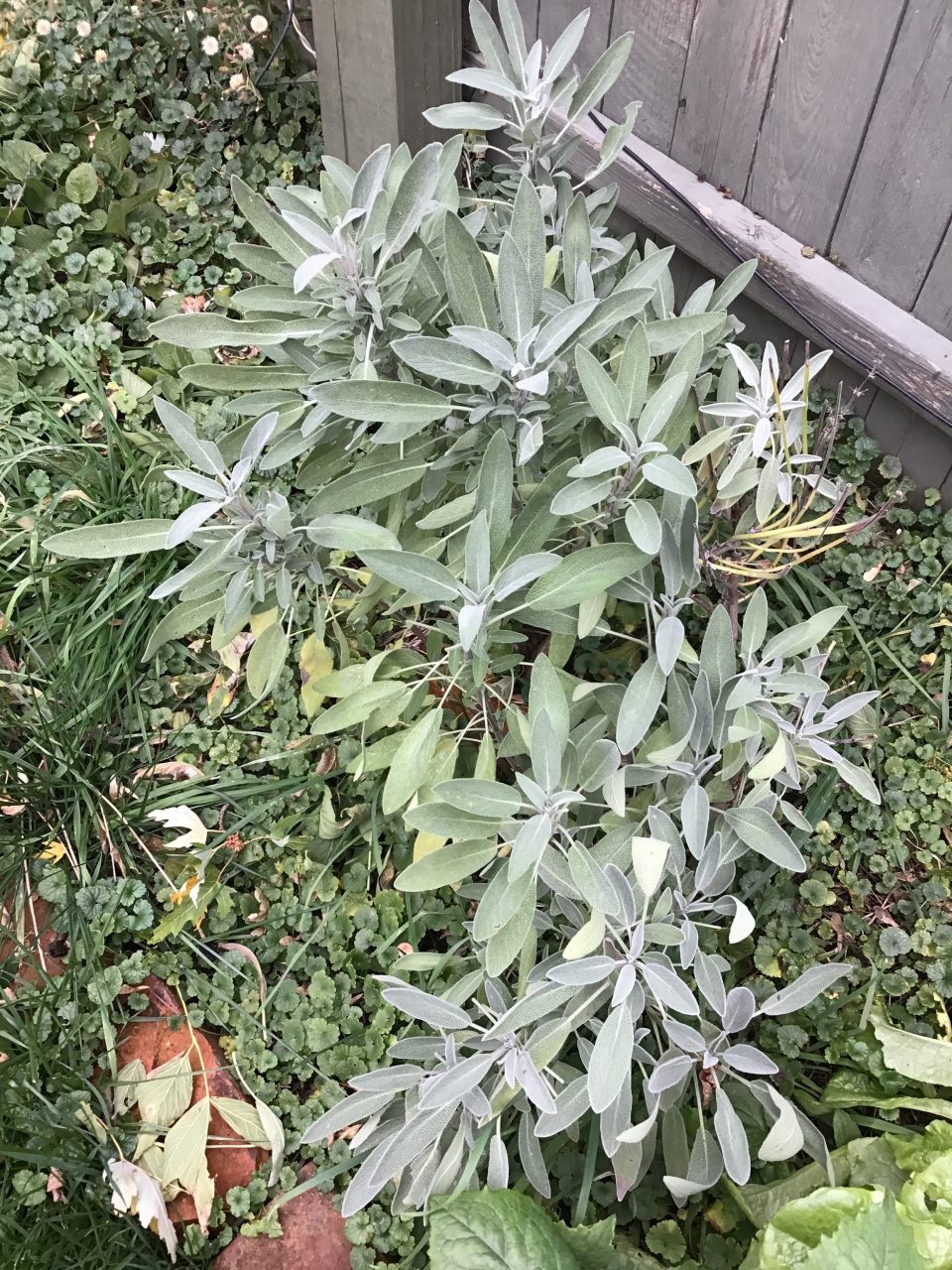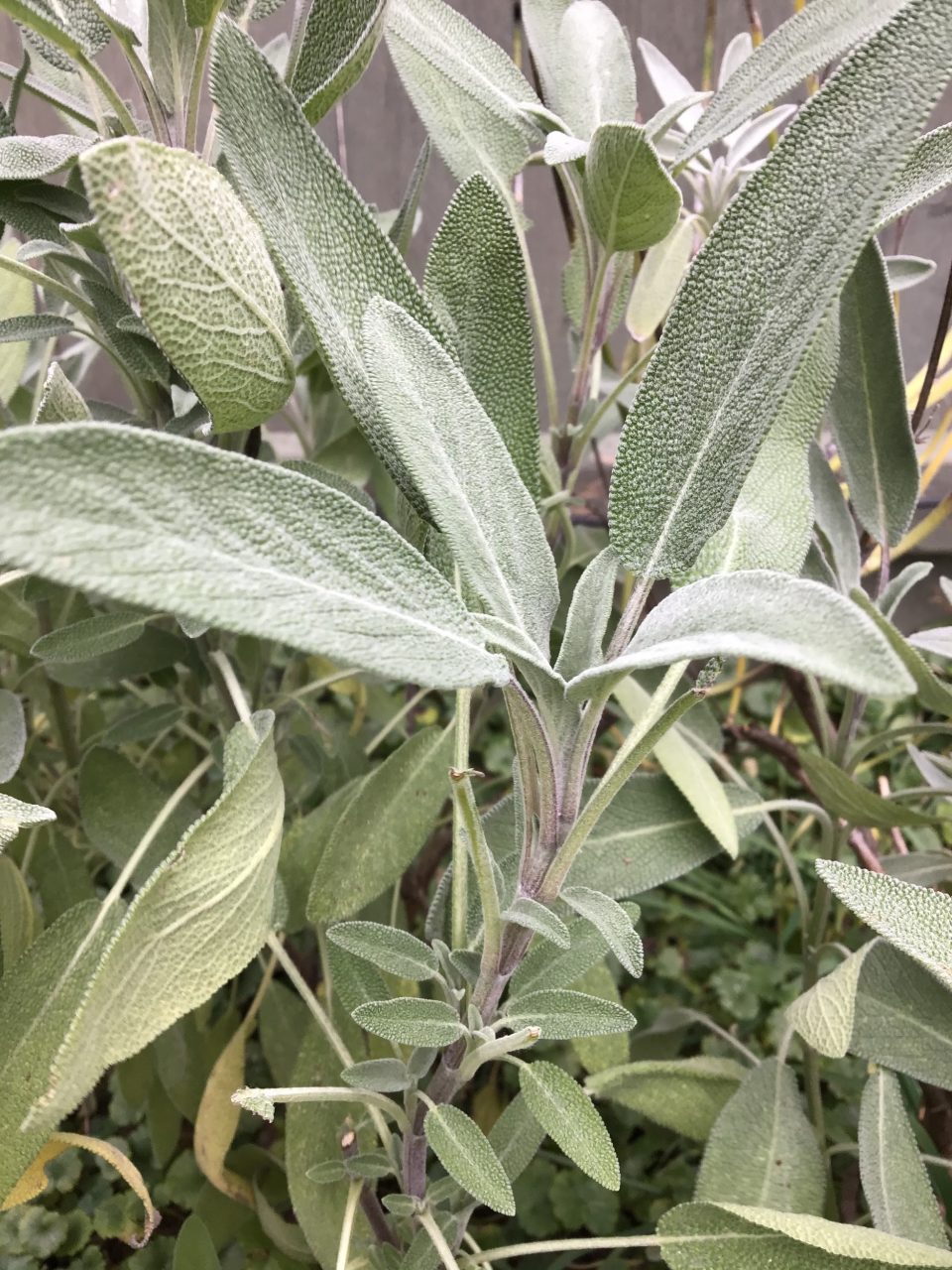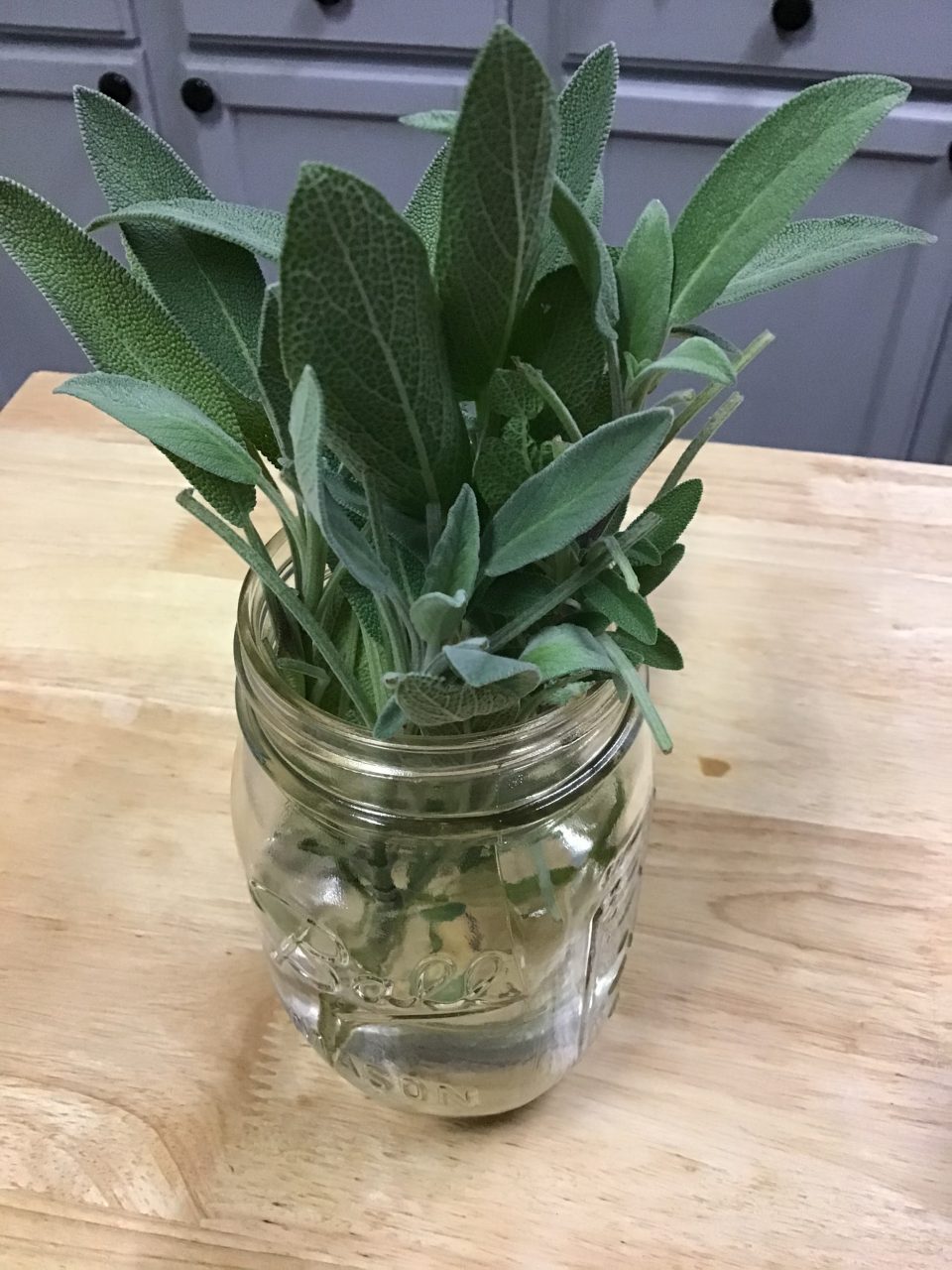
Unearthing the sage plant, it’s uses, benefits, and a recipe to boot!

Some people believe that a specific space can be cleared of negative energy by burning sage leaves and waving the smoke through the desired space. I have personally never tried this sage use, but I have felt the power of sage in other ways, and so I can say that I wouldn’t doubt it’s ability to release an area of negative energy.

Fresh sage uses and benefits
Sage is a great cooking herb. The flavor is complementary to holiday dishes such as turkey at Thanksgiving or a roasted herb chicken. It is also a fabulous addition to green tea. In addition to consuming sage, it can also be burned and waved throughout a spade with negative energy to help release it.
Sage is often an added ingredient in skincare products, vitamins, and even essential oils. This is because sage contains antibacterial properties, anti-inflammatory properties, and antiseptic properties which are all beneficial to the skin. Sage can also help treat asthma when the sufferer inhales the steam.
These properties are also helpful to the immune system and if made into a tea can be used to swish around the inside of the mouth which can help alleviate inflammation in the mouth and throat.
If you suffer from digestive problems then you may consider adding sage to your diet as it is said to help cure indigestion. You can also reduce your risk of diabetes by adding this herb to your food or beverages.
Sage is considered beneficial in the lowering of cholesterol in the body. This would greatly benefit the health of your heart. Ingesting sage is also said to benefit a person’s memory, attention span, and increase alertness. However, the scent of sage, even in the essential oil form, is believed to be powerful enough to improve a person’s focus through aromatherapy. Sage is currently being studied as a method of improving the memory of Alzheimer’s patients.
In the spirit of the Autumn season, I found a recipe using fresh sage leaves!

Fast Pumpkin-Sage lasagna
- 4 1/4 ounces walnuts, coarsely chopped (1 cup)
- One 15-ounce can pumpkin (not pumpkin pie mix)
- 8 sage leaves, minced
- Sea salt
- 1/2 teaspoon chili flakes
- Freshly ground pepper
- 1/2 teaspoon white balsamic vinegar
- 3 garlic cloves, minced
- 13 ounces ricotta (1 1/2 cups)
- 2 eggs
- 12 lasagna noodles
Preheat the oven to 425°. Place the walnuts on a baking sheet and toast in the oven for 10 minutes, or until they are light brown and fragrant.
In a medium bowl, whisk together the pumpkin, sage leaves, sea salt, chili flakes, 1/2 teaspoon of freshly ground pepper, white balsamic vinegar, garlic and 1 cup of water.
In another medium bowl, whisk together 1 cup of ricotta, eggs, 1/2 teaspoon of freshly ground pepper and 1/4 cup water.
In a 9-by-11-inch ovenproof baking dish, spread 1/3 cup of pumpkin and cover with 4 lasagna noodles, 1/3 of the pumpkin and 1/3 of the ricotta. Continue to layer the lasagna, sprinkling all of the walnuts in the middle layer. Dot the top of the lasagna with the remaining 1/2 cup of ricotta cheese.
Cover the baking dish with aluminum foil and bake in preheated oven for 35 minutes. Uncover the baking dish and spoon the pan juices over any noodles that are not in the liquid. Bake for 10 minutes, until the noodles are soft.
Remove the lasagna from the oven and set it aside to rest for 10 minutes before serving.